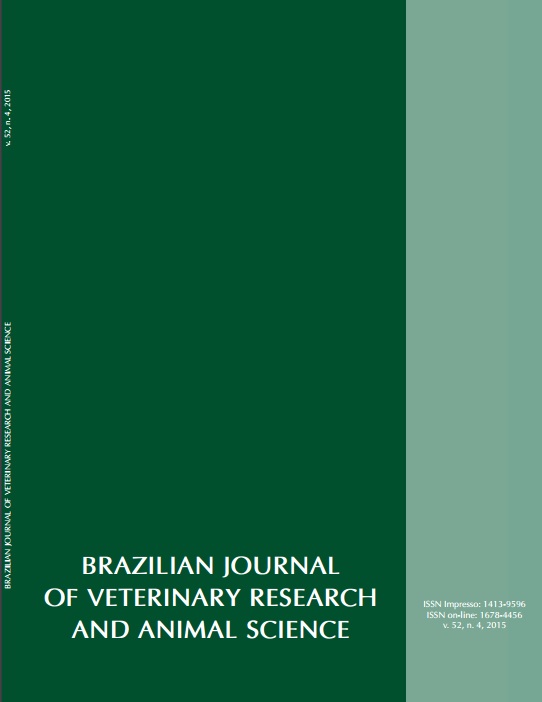Population variations of Dermatobia hominis (Linnaeus Jr., 1781) (Diptera: Cuterebridae) and correlation with variable climate in southeast Brazil
DOI:
https://doi.org/10.11606/issn.1678-4456.v52i4p350-355Keywords:
Population dynamics, Dermatobia hominis, BotflyAbstract
Dermatobia hominis infestation in dairy cattle was investigated, searching for the existence of correlations between the incidence of botfly and climatic factors (temperature, relative humidity, and rainfall) and its distribution on the animal body surface. Two geographical areas located in the southeast region of Brazil were selected. Area 1- tropical and sub-tropical climate of altitude (Cwa); Area-2 tropical climate (Aw). During the period from May to December 2013, 10 animals were selected in each area and biweekly field collections were carried out for quantification of the average number of larvae in the herd. Larval nodes were registered during every month of the survey. Area 1 had an average of 12.94 larvae/month and Area 2 an average of -7.58 larvae/month. No correlation between the number of larvae and the climatic variables (p > 0.05) was found in Area 2. A positive correlation between the average number of larvae and the temperature (p = 0.011) and precipitation (p = 0.034) was found in Area 1. These climatic factors are related to soil characteristics, influencing the penetration of L3 larvae and the pupal period. The greatest number of nodules was found in the anterior inferior region, followed by the anterior superior region of the animal body. The infestation in these regions deserves a special emphasis because these are the regions comprising the part of the animals’ hides which can be industrialized, and thus represent the largest cause of economic losses.Downloads
Download data is not yet available.
Downloads
Published
2015-12-10
Issue
Section
ARTICLES
License
The journal content is authorized under the Creative Commons BY-NC-SA license (summary of the license: https://
How to Cite
1.
Medeiros WS, Baptista MN, Borja GEM. Population variations of Dermatobia hominis (Linnaeus Jr., 1781) (Diptera: Cuterebridae) and correlation with variable climate in southeast Brazil. Braz. J. Vet. Res. Anim. Sci. [Internet]. 2015 Dec. 10 [cited 2024 Apr. 18];52(4):350-5. Available from: https://revistas.usp.br/bjvras/article/view/89482





